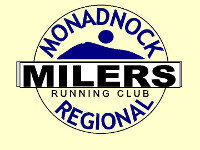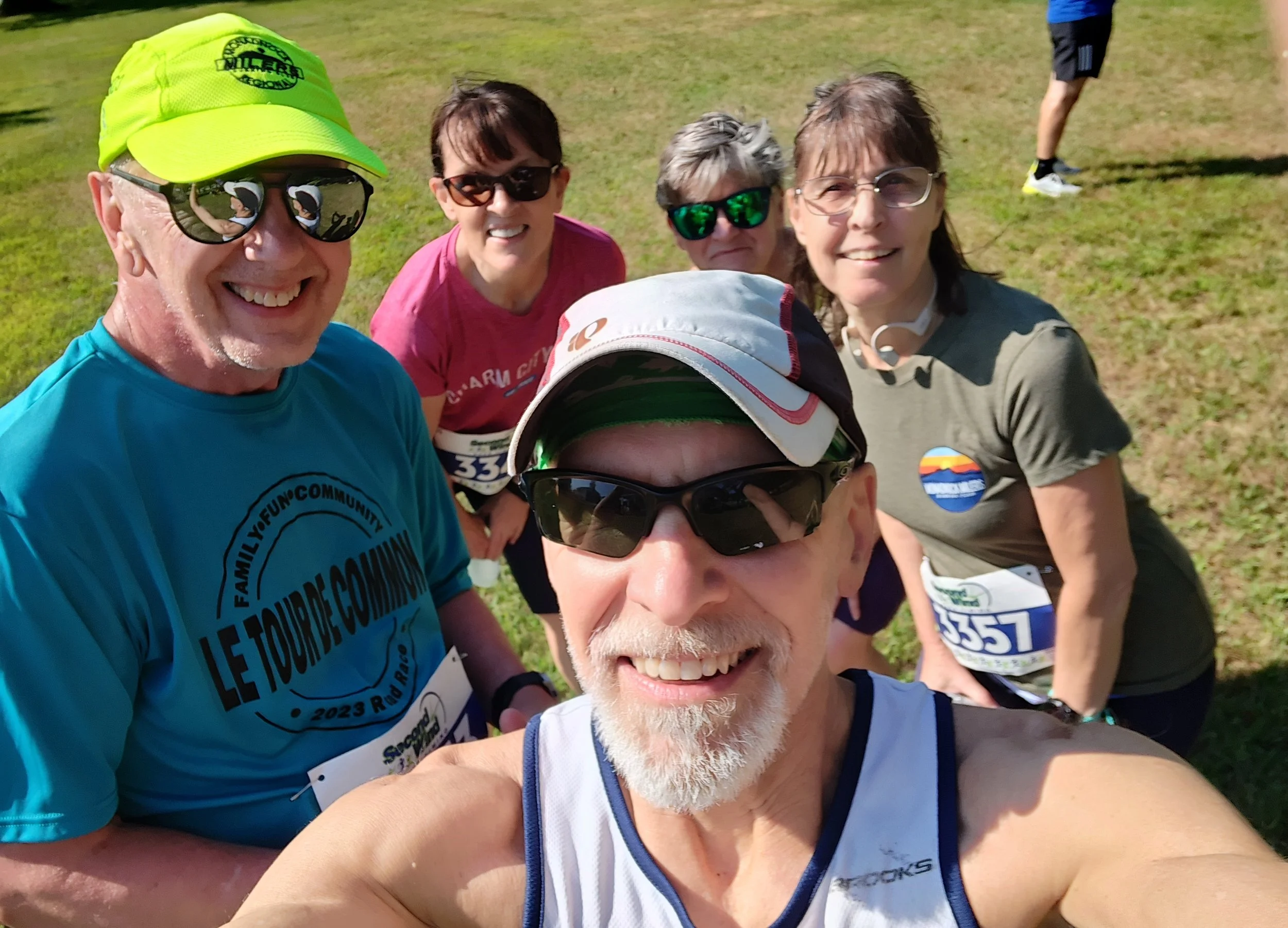Who We Are
The Monadnock Regional Milers are made up of members from towns all over the Monadnock area and beyond! In addition to our “running members,” we are also grateful to have a fantastic group of local Sponsors rounding out “who we are.”
“Who We Are” is a place you can find Member Bios as well as other stories related to our community members!
Use technology for running?
There is a lot of technology to help runners keep and improve their running. Everything from smart phone apps to wearable devices to improved running apparel to social media and networking. Have you found some technology that you really love and helped you with running? Would you be willing to share it with the club? Send your story of how a technology helped your running to us at monadnockmilers@gmail.com.
2019 Winter Chiller Financial Recap
2019 Winter Chillers were a great success!! We had many runners of all ages come out in all kinds of conditions. We were lucky to have six terrific venues to allow us to have a warm and dry place to gather before and after the races. We are thankful to all the volunteers that brought food, donated prizes, helped set up and clean up, set the courses, directed traffic, took photographs and staffed the finish line.
Race entries = $1,990.00
Supplies: $86.40
Prizes: $420.60
Printing: $49.20
Venues: $125.00
Beanies for all participating in at least 5 of the 6 races: $915.00
Wednesday Night Workouts at Con Val Q & A
Interview with Club Coach Mike Smith about Wednesday Night Workouts
Local high school and youth coach Mike Smith offers coaching services in the form of Wednesday Night Workouts at the ConVal track starting April 3rd through the end of September. Based off a winning formula that has lead to 7 State Championships and countless individual honors for his runners, Wednesday nights offer an opportunity to runner of any ability to improve their performances over any distance from 5K to the marathon. Here is an interview with coach Smith.
Q: How long have you been coaching?
CMS: This is my 20th year coaching the Mascenic track program. I’ve been coaching for the Milers for about ten years now. My wife had previously attended some of the Miler practices but I had no real interest as I had plenty of “training” opportunities with my own team. The Milers needed a coach so I offered my services and now I’ve grown to love the Wednesday Night crew and I get to spend an hour or so focusing on my own training without focusing on my team. It works out.
Q: So are the Wednesday Night workouts just a scaled down version of what your high school kids do?
CMS: Yes and no. I have some of the States best athletes but they don’t always start that way. I also coach a youth program that introduces kids to running and in ways the kids new to high school running and running in general aren’t much different in ability as adults who have to manage a career and family obligations so many of the same training philosophies apply. Pretty much all of my kids do the same workouts regardless of ability, however the focus and application of the workouts may differ. So I don’t simply have adults repeat workouts my top athletes do, but much of the specs of the workouts are similar.
All of our workouts for cross country are based of the athletes “goal pace” for the season. At the beginning of the season, the athletes can’t race at the pace we’ve selected for the end of the season, however they can run shorter segments at that pace. Prepping the body to do the work that is to come later is what we’re going for and by the end of the season, through cumulative work, they get there.
For adults, hopping on the track and crushing faster than race pace repeats can be a recipe for disaster. As we age we aren’t as resilient and injury resistant as our younger counterparts are. Additionally we traditionally don’t race distances shorter than 5K, so basically any time we run at 5K goal pace we can count that as speed work. Obviously the greater number of repeats, or the greater volume of distance we can run at goal pace, the more likely we are to be able to do that when we race.
Q: So I wouldn’t be sprinting as hard as I could, taking a break, then doing it again?
CMS: Goodness no. As adults that’s a sure fire way to end up injured. Some people think that is the way to get faster but it’s certainly risky. Even trained athletes only spend maybe 5% of their time training like that. The goal is to get faster and you really only need to run faster than race pace to accomplish that.
Q: Is everything on the track?
CMS: No, the majority is though. Obviously athletics at CV are the priority. Sometimes we need to alter the plans for workouts based on field usage. When we can’t run on the track we either head for the bike path for a tempo based workout or to Southfield road for hill work. Additionally sometimes we head out on the rail trail if weather conditions or snow close the track. We also warm up and cool down off the track.
Q: How would a newcomer to running or running fast get involved/begin workouts?
CMS: The workouts are developed such that there are an ascending number of repeats the athlete can do. My high school kids do this. Sometimes I have kids that potentially have the same goal pace but one is very fit from the beginning while the other needs a month or so to get in shape. They both would operate at the same goal pace, but the more fit athlete would do more repeats. This also allows the athletes to adjust the workout as they go based on how they feel. If someone’s sick they might do less but they would always do it at goal pace. We don’t practice running “slow.”
For someone new I would suggest they alternate running a lap and walking a lap until they complete ten laps. Next time out, run two laps, walk a lap until they get ten laps. Continue this plan until they can run ten laps without stopping. Now they are ready for the regular workout.
Q: So if I showed up April 3rd, what should I expect?
CMS: We typically meet in the parking lot, just look for a number of older people looking slightly fitter than the general population. We loiter around until exactly 6pm when my wife, the task master, yells “Let’s go,” and we head off for a mile + warmup around South Meadow School back to the track. We head down there and on the first day we’ll do what I call my bread and butter workout of Continuous 200s. The workout consists of 200 meters of “goal pace” running followed by 200 meters of recovery running. We do that for ten circuits of the track, 2 and a half miles with half of that at goal pace. Then we cool down and the workout is over.
One of the things an athlete new to running workouts should know is the goal of the workout is to get all the way through the workout. If you’re having a hard time meeting the number of repeats or the pace, either the pace is too fast and you’ve chosen a goal pace above your ability or you’re not using the recovery interval properly. I have my guys actively recover always, meaning they run their recovery rather than stand and catch their breath. I figure that what we all need to learn is to recover while we run as when we race we don’t get to go sprinting out, find a bench for a break and then take off again. We don’t care about recovery pace, but we run it.
Q: What do you see as the biggest benefit to doing Wednesday Night Workouts?
CMS:I think there are many benefits to running Wednesday nights. Probably the biggest is the social aspect of it. Anyone can look up workouts and go to the local track and crush some laps. But having others there, for the encouragement, for help with pacing and for their judgement. Other runners provide feedback and a barometer for progress.
If an athlete has been running for fitness and caught the running bug, there is no way that they won’t get faster by doing WNW. The system is set up for progressive performance. The proof is in the pudding. I’ve had people say they didn’t do speedwork because they focus on marathons. Running 5K pace will improve your marathon speed as well.
Q: Any tips should someone want to come and experience the Wednesday Night Workouts?
CMS: Bring a water bottle and make sure you check the hourly weather forecast as it can get windy and brisk on the track. Lots of the athletes bring a change of clothes and hit up Harlows for some food. And if you’re not used to running “fast” expect a couple aches and pains as your body becomes accustomed to the newer, faster you.
Summary:
Wednesday Night Workouts begin April 3rd at 6pm at the ConVal track and continue into the end of September. For additional information, feel free to email coach Smith at msmith@mascenic.org



